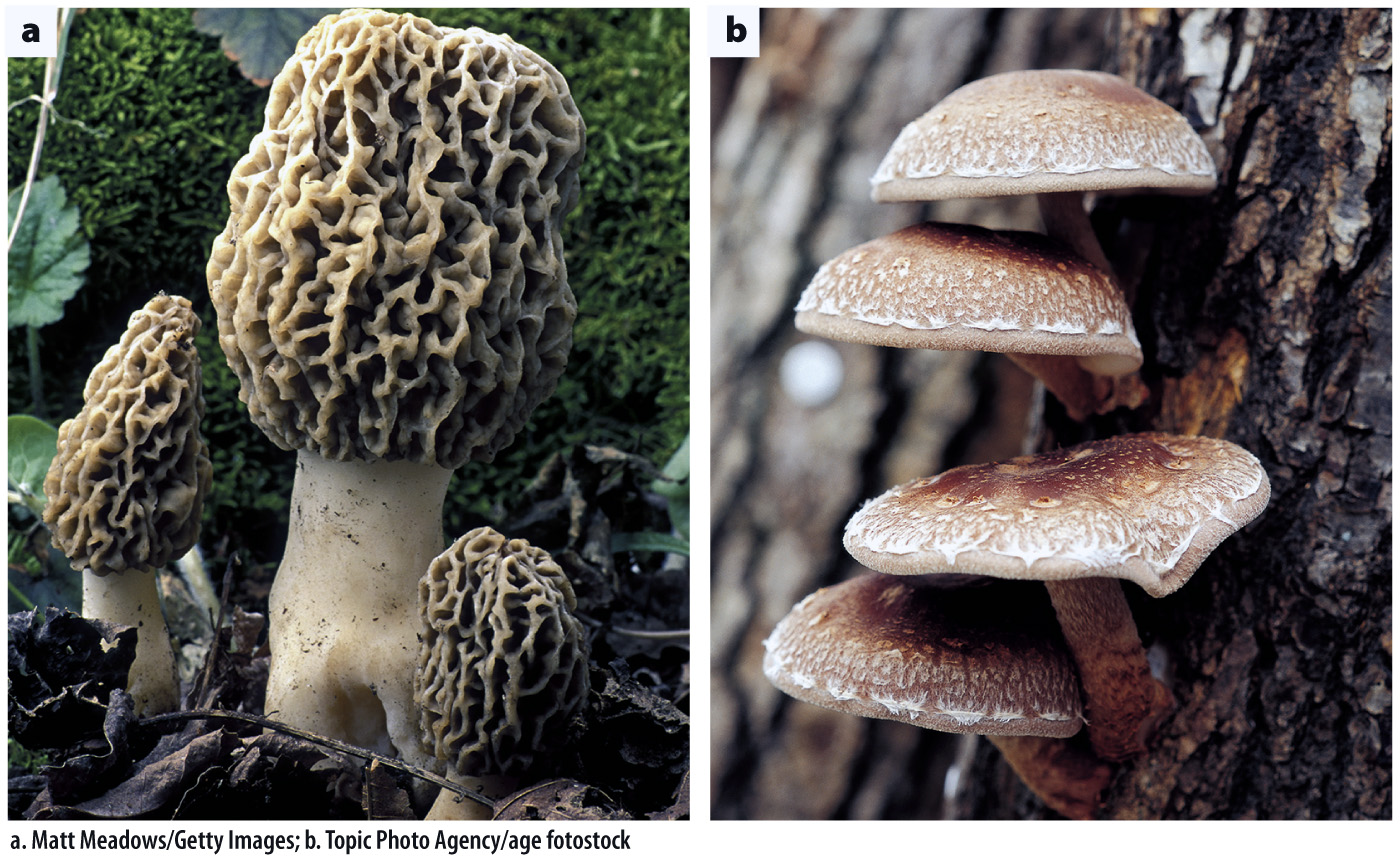The Dikarya produce regular septa during mitosis.
The final major node, or branching point, in the fungal phylogeny marks the origin of the Dikarya, a group that includes about 98% of all described fungal species. A key feature of the dikaryotic fungi is that every mitotic division is accompanied by the formation of a new septum. This innovation allows these fungi to control the number of nuclei within each cell and thus to proliferate dikaryotic cells. The Dikarya include all the edible mushrooms, the yeast species used in the production of beer, bread, and cheese, the major wood-
The Dikarya contain two monophyletic subgroups (see Fig. 34.15), each named for the shape of the cell in which the key reproductive processes of nuclear fusion (karyogamy) and meiosis take place. The Ascomycota, or ascomycetes, are sometimes called sac fungi because nuclear fusion and meiosis take place in an elongated saclike cell called an ascus (askos is Greek for “leather bag”). The Basidiomycota, or basidiomycetes, are popularly known as club fungi because the nuclear fusion and meiosis take place in a club-
Although ascomycetes and basidiomycetes have the same basic life cycle, they diverged from each other as much as 600 to 500 million years ago and evolved complex multicellular structures independently of each other. The morel in the supermarket is an ascomycete, whereas the shiitake mushroom next to it is a basidiomycete (Fig. 34.18). In addition to asci and basidia, the two groups differ in several other features. For example, the septal pores that connect adjacent cells within hyphae are distinct in the two groups, as are the ways in which cells can plug the pores to minimize damage to a mycelium. Also, when ascomycetes reproduce, mating cells form and their nuclei fuse in relatively close succession. Thus, the heterokaryotic stage is brief. In contrast, in the basidiomycetes, the nuclei of two fused cells may remain separate for a long time. In this case, hyphae containing both types of nuclei (dikaryotic hyphae) can continue to absorb nutrients from the substrate for a while before nuclear fusion occurs.
